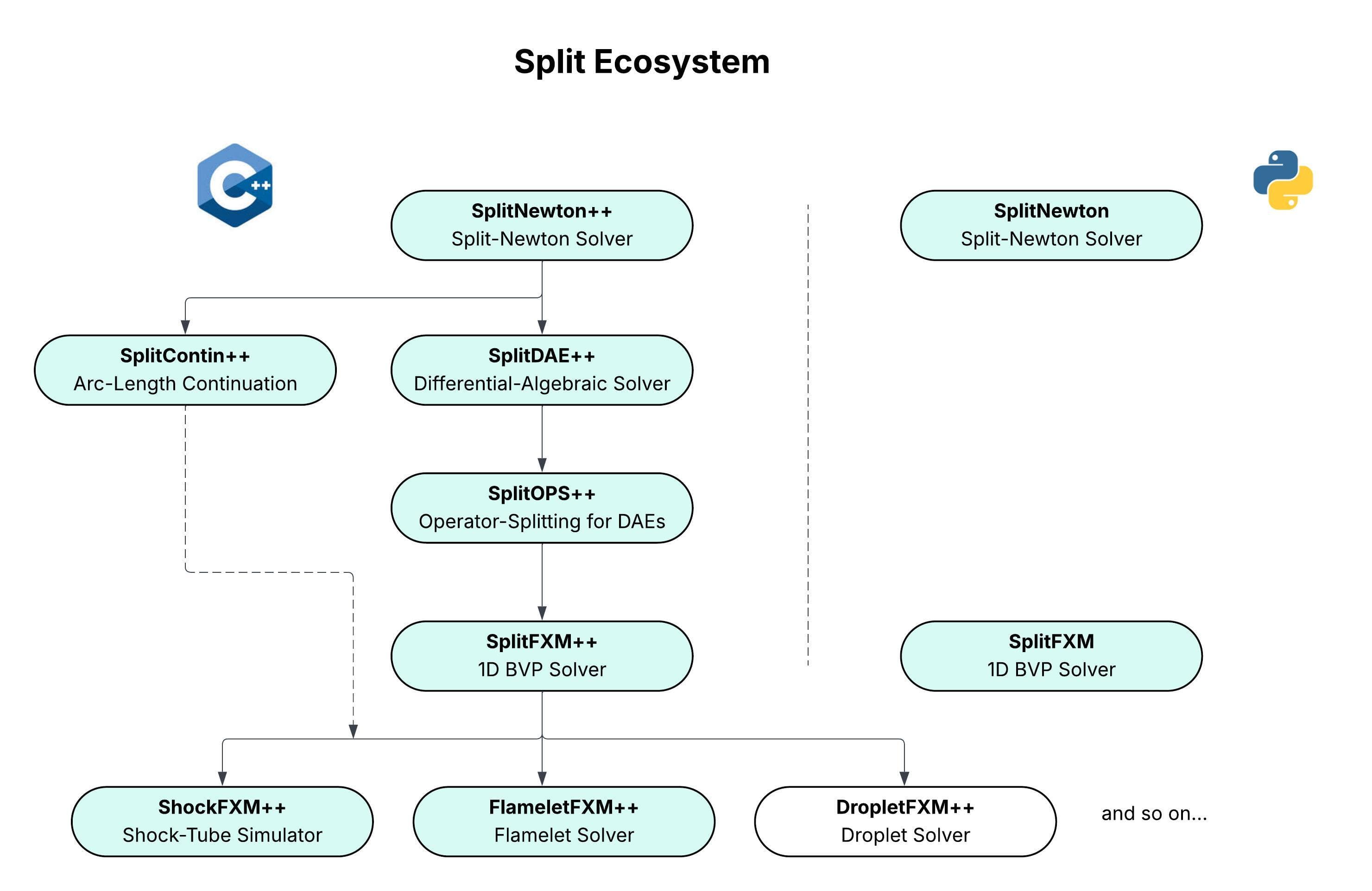Solve Complex Scientific Problems with SplitFXM
A powerful 1D computational physics library using Finite-Difference and Finite-Volume methods with asymmetric stencils and adaptive mesh refinement.
Powerful Features
SplitFXM provides a comprehensive toolkit for tackling the most challenging computational physics problems.
Finite-Difference & Finite-Volume
Powerful numerical methods for solving differential equations with high accuracy.
Asymmetric Stencils
Flexible stencil configurations for handling complex boundary conditions and irregular domains.
Adaptive Mesh Refinement
Dynamically adjusts the computational grid to focus resources where they're needed most.
Newton & Split-Newton Solvers
Robust approaches for steady-state solutions of complex non-linear systems.
Handles Steep Gradients
Specially designed to capture sharp transitions in physical properties efficiently.
Multiple Boundary Conditions
Support for diverse boundary specifications to model real-world scenarios accurately.
Solver Comparison
How SplitFXM differs from traditional boundary value problem solvers?
SciPy's solve_bvp and Julia's DifferentialEquations.jl
Requires transformation of higher-order differential equations into first-order systems:
# Must convert to dy/dx = f(x,y,p) form
# Original equation: y'' + p*y' + q*y = g(x)
# Converted system:
# y1' = y2
# y2' = g(x) - q*y1 - p*y2Explicit Jacobian matrices must be provided for computationally intensive problems:
# Must define df/dy and df/dp manually
# This becomes increasingly complex for large systemsSplitFXM Approach
Work directly with governing equations in their natural form:
# Define equations as they appear in physics/engineering
# No need to transform to first-order systems
# res = d2x(y) + p*dx(y) + q*y - g(x)Sparse Jacobians at runtime - Enhanced performance for complex systems
Comparison
For the Blasius Problem (ηmax = 10, N = 100)
| Method | Time (s) |
|---|---|
| SplitFXM++ | ~0.065 |
| SciPy solve_bvp (no Jacobian) | ~0.073 |
By focusing on the natural form of equations, SplitFXM makes it more intuitive and accessible while providing computational efficiency.
The “Split” Methodology
Our unique approach divides complex systems into multiple variable segments for more efficient computation.
1. System Division
Break down complex physical systems into manageable subsystems.
2. Variable Fixing
Hold some variables fixed while solving for others in each subsystem.
3. Iterative Solution
Alternate between subsystem solutions, gradually converging to the complete system solution.
4. Recursive Processing
Apply the same approach recursively for highly complex systems.

“Divide and conquer for complex numerical solutions”
Examples
Check out an example application for shock-tube simulation - ShockFXM++
Interested in a state-of-the-art flamelet solver? Contact us
Application Domains
SplitFXM excels at solving challenging 1D problems across multiple scientific disciplines.
🌬️ Compressible Flows
Model gas dynamics, shock waves, and acoustics with precision.
🔥 Combustion
Simulate complex reactions and heat release in combustion processes.
🔋 Batteries
Analyze electric potential distribution and ion transport in battery cells.
❄️ Phase Changes
Track interfaces and property jumps during phase transformations.
🌡️ Heat Transfer
Model conduction, convection, and radiation heat transfer mechanisms.
⚗️ Chemical Kinetics
Solve stiff reaction networks with numerous species and reactions.
⚡ Plasma Physics
Simulate ionized gas behavior under electromagnetic influences.
🧲 Magnetohydrodynamics
Couple fluid flow with electromagnetic fields for complex plasma models.
Pricing
Simple and transparent licensing options
| License Type | Price | Intended Use | Action |
|---|---|---|---|
| Non-Commercial | Free | Research, educational, and personal use | Download |
| Commercial | On Request | Business purposes or revenue-generating use | Request |
| C++ Version (including pre-requisites) | On Request | For all purposes | Request |
Non-commercial use is licensed under Creative Commons Attribution-NonCommercial 4.0 International (CC BY-NC 4.0)
Have questions? Contact us
Citing SplitFXM
If you use SplitFXM in your research, please cite it using the following format:
@software{pavan_b_govindaraju_2025_14827049,
author = {Pavan B Govindaraju},
title = {gpavanb1/SplitFXM: v0.5.0},
month = feb,
year = 2025,
publisher = {Zenodo},
version = {v0.5.0},
doi = {10.5281/zenodo.14827049},
url = {https://doi.org/10.5281/zenodo.14827049},
}SplitFXM is an open-source project. Your acknowledgment helps support its continued development.